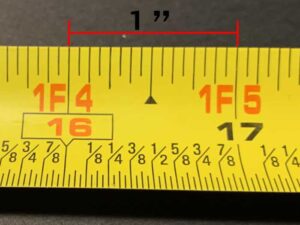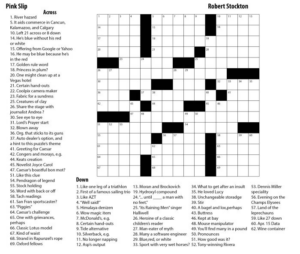Embark on a culinary adventure with meal prep pescatarian, a comprehensive guide that empowers you to create nutritious, flavorful, and sustainable meals that honor both your health and the ocean’s bounty. Dive into the world of pescatarianism, discover essential ingredients, explore meal planning strategies, and uncover creative recipe ideas that will transform your weekday meals into a symphony of flavors.
Whether you’re a seasoned pescatarian or simply curious about incorporating more plant-based seafood into your diet, this guide provides everything you need to master the art of meal prep pescatarian. Join us as we explore the benefits, challenges, and solutions associated with this unique dietary approach, ensuring you have all the tools to succeed in your culinary endeavors.
Pescatarian Meal Prep Basics
Pescatarianism, a diet that includes seafood but excludes other types of meat, is gaining popularity due to its health and environmental benefits. Meal prepping for a pescatarian diet can be simple and convenient, allowing you to enjoy nutritious and satisfying meals throughout the week.
Planning and Preparing Pescatarian Meals
Planning pescatarian meals involves choosing a variety of seafood, fruits, vegetables, whole grains, and healthy fats. Focus on incorporating lean fish, such as salmon, tuna, or cod, into your meals, along with plant-based proteins like beans, lentils, and tofu. Fruits and vegetables provide essential vitamins, minerals, and fiber, while whole grains offer complex carbohydrates for sustained energy.
Healthy fats from sources like olive oil, avocado, and nuts support heart health and satiety.
Benefits of Meal Prepping for Pescatarians
Meal prepping offers several advantages for pescatarians. It saves time and reduces stress during busy weekdays, as meals are already prepared and ready to eat. Meal prepping also helps control portion sizes, ensuring you consume balanced meals that support your health goals.
Additionally, it promotes healthier eating habits by reducing the temptation to order takeout or make unhealthy choices when short on time.
Essential Ingredients for Pescatarian Meal Prep
Meal prepping as a pescatarian requires a well-stocked pantry and refrigerator. Here’s a detailed list of essential ingredients to keep on hand for effortless and nutritious meal preparation:
| Category | Ingredients |
|---|---|
| Protein | Canned tuna, salmon, sardines, beans, lentils, tofu, tempeh |
| Vegetables | Frozen peas, corn, carrots, broccoli, spinach, onions, garlic |
| Grains | Brown rice, quinoa, pasta, oats |
| Seasonings | Olive oil, salt, pepper, herbs (e.g., basil, oregano, thyme), spices (e.g., paprika, cumin, chili powder) |
| Category | Ingredients |
|---|---|
| Protein | Fresh fish (e.g., salmon, tuna, tilapia), shrimp, mussels, clams |
| Vegetables | Leafy greens (e.g., lettuce, spinach, kale), bell peppers, tomatoes, cucumbers, avocados |
| Fruits | Berries (e.g., strawberries, blueberries), bananas, apples, oranges |
| Dairy/Alternatives | Milk, yogurt, cheese (for those who consume dairy), plant-based milk (e.g., almond milk, soy milk) |
Tips for Selecting and Storing Ingredients:* Choose fresh produce that is firm, brightly colored, and free of bruises or blemishes.
- Store vegetables in the refrigerator’s crisper drawer to maintain their freshness.
- Freeze fish in airtight containers to prevent freezer burn.
- Keep pantry staples in a cool, dry place to extend their shelf life.
Meal Planning Strategies for Pescatarians
Planning pescatarian meals that meet your nutritional needs and preferences can be simple with the right strategies. Here’s a guide to help you get started:
Meal Frequency and Portion Sizes
The optimal meal frequency for pescatarians varies depending on individual needs and preferences. However, most experts recommend eating regular meals and snacks throughout the day to maintain energy levels and prevent overeating. As for portion sizes, it’s important to listen to your body’s hunger cues and eat until you’re satisfied but not overly full.
Macronutrient Balance
To ensure a balanced pescatarian diet, it’s crucial to focus on macronutrients: carbohydrates, protein, and fats. Carbohydrates provide energy, protein supports muscle growth and repair, and fats aid in hormone production and nutrient absorption. Aim for a balance of all three macronutrients in each meal, with a focus on complex carbohydrates and lean protein sources.
Sample Meal Plans
Here are a few sample meal plans to inspire your pescatarian meal prep:
- Breakfast:Oatmeal with berries and nuts
- Lunch:Salad with grilled salmon, quinoa, and vegetables
- Dinner:Salmon with roasted vegetables and brown rice
- Snack:Apple with peanut butter
- Breakfast:Smoothie made with fruits, vegetables, and plant-based milk
- Lunch:Tuna sandwich on whole-wheat bread
- Dinner:Lentil soup with a side of crusty bread
- Snack:Hummus with vegetable sticks
Creative Pescatarian Meal Prep Ideas: Meal Prep Pescatarian
Pescatarian meal prep can be a creative and flavorful way to enjoy healthy and sustainable seafood. With a little planning, you can create a variety of delicious and nutritious meals that will keep you satisfied all week long.
Here are a few creative pescatarian meal prep ideas to get you started:
Breakfast
- Smoked Salmon and Avocado Toast: Top whole-wheat toast with smoked salmon, avocado, and a squeeze of lemon juice. This is a quick and easy breakfast that is packed with protein and healthy fats.
- Tuna Salad with Crackers: Mix canned tuna with mayonnaise, celery, onion, and dill. Serve with whole-wheat crackers for a light and refreshing breakfast.
- Oatmeal with Berries and Nuts: Cook oatmeal with milk or water and top with berries, nuts, and a drizzle of honey. This is a warm and comforting breakfast that will give you energy for the day ahead.
Lunch
- Grilled Salmon Salad: Grill salmon fillets and add them to a salad with mixed greens, tomatoes, cucumbers, and a light vinaigrette. This is a healthy and satisfying lunch that is perfect for a hot summer day.
- Tuna Sandwich on Whole-Wheat Bread: Combine canned tuna with mayonnaise, celery, onion, and dill. Spread the tuna salad on whole-wheat bread and add your favorite toppings, such as lettuce, tomato, and cheese.
- Lentil Soup: Make a batch of lentil soup with lentils, vegetables, and broth. This is a hearty and nutritious lunch that is perfect for a cold winter day.
Dinner
- Baked Cod with Lemon and Herbs: Bake cod fillets with lemon slices, herbs, and olive oil. Serve with roasted vegetables or a side salad.
- Salmon Stir-Fry: Stir-fry salmon with vegetables, such as broccoli, carrots, and snap peas. Serve over brown rice or quinoa.
- Fish Tacos: Grill or pan-fry fish and serve it in tortillas with your favorite toppings, such as cabbage, salsa, and guacamole.
Snacks
- Fruit and Yogurt: Combine fruit, such as berries, bananas, or apples, with yogurt for a healthy and refreshing snack.
- Veggies and Hummus: Cut up vegetables, such as carrots, celery, or cucumbers, and serve them with hummus for a crunchy and satisfying snack.
- Trail Mix: Combine nuts, seeds, and dried fruit for a portable and nutritious snack.
Time-Saving Meal Prep Techniques
Meal prep can be a daunting task, but it doesn’t have to be. By using efficient techniques, you can save time and effort while still enjoying delicious, healthy meals.One of the best ways to save time is to batch cook.
This involves cooking a large quantity of food at once, then freezing the leftovers for later. This is a great way to have healthy meals on hand without having to spend hours in the kitchen every night.Another time-saving technique is to use kitchen appliances.
For example, you can use a slow cooker to cook a meal while you’re at work, or a food processor to quickly chop vegetables.Finally, it’s important to optimize your meal prep workflow. This means planning ahead and making sure you have all the ingredients and equipment you need before you start cooking.
It also means minimizing waste by using all of the ingredients you purchase.
Batch Cooking
Batch cooking is a great way to save time and effort in the kitchen. By cooking a large quantity of food at once, you can have healthy meals on hand for the entire week.To batch cook, simply choose a recipe that you can make in bulk.
Then, cook the recipe according to the directions, but double or triple the ingredients. Once the food is cooked, let it cool completely, then divide it into individual portions and freeze.When you’re ready to eat, simply thaw the food and reheat it.
You can also use the frozen food to create new meals, such as soups, stews, or casseroles.
Freezing
Freezing is a great way to preserve food and extend its shelf life. You can freeze almost any type of food, including cooked meals, fruits, vegetables, and meats.To freeze food, simply place it in an airtight container or freezer bag.
Be sure to label the container or bag with the date and contents. Frozen food can be stored for up to 6 months.When you’re ready to eat frozen food, simply thaw it in the refrigerator or microwave. You can also cook frozen food directly from the freezer, but it will take longer to cook.
Kitchen Appliances
Kitchen appliances can be a great help in the kitchen, especially when you’re trying to save time. For example, you can use a slow cooker to cook a meal while you’re at work, or a food processor to quickly chop vegetables.Here
are a few other kitchen appliances that can help you save time:* Blender: A blender can be used to make smoothies, soups, sauces, and dips.
Rice cooker
A rice cooker can be used to cook rice, quinoa, and other grains.
Pressure cooker
A pressure cooker can be used to cook food quickly and easily.
Air fryer
An air fryer can be used to cook food quickly and healthily.
Optimizing Your Meal Prep Workflow
One of the best ways to save time in the kitchen is to optimize your meal prep workflow. This means planning ahead and making sure you have all the ingredients and equipment you need before you start cooking.Here are a few tips for optimizing your meal prep workflow:* Plan your meals ahead of time.
This will help you avoid impulse purchases and make sure you have all the ingredients you need.
- Make a grocery list and stick to it. This will help you avoid buying unnecessary items and save money.
- Prep your ingredients ahead of time. This will save you time when you’re cooking.
- Use kitchen appliances to your advantage. Kitchen appliances can help you save time and effort in the kitchen.
- Clean up as you go. This will help you avoid a big mess at the end of your cooking session.
Meal Prep Equipment and Storage Solutions
Equipping your kitchen with the right tools and choosing suitable storage options are crucial for successful pescatarian meal prep. Essential cookware includes non-stick pans, baking sheets, and a sharp knife. Consider investing in a food processor or blender to streamline tasks like chopping and pureeing.
When it comes to storage, glass containers are a popular choice due to their durability, microwave and oven safety, and ability to prevent odor absorption. Plastic containers are lightweight and affordable, but some may contain harmful chemicals like BPA. Reusable bags are a sustainable option for storing snacks and sandwiches.
Organizing and Labeling
To keep your meal prep organized, consider using different sizes and shapes of containers to accommodate various portions and dishes. Label each container with the contents and date to avoid confusion and ensure freshness.
Health Benefits of Pescatarian Meal Prep
Pescatarian meal prep offers a wealth of nutritional advantages, promoting overall health and well-being.The cornerstone of pescatarian diets is fish, a rich source of omega-3 fatty acids. These essential fats have been linked to reduced risk of cardiovascular disease, improved cognitive function, and anti-inflammatory properties.Vegetables
and whole grains, also abundant in pescatarian meal prep, provide an array of vitamins, minerals, and fiber. Fiber promotes satiety, aids digestion, and helps regulate blood sugar levels. Vitamins and minerals, such as vitamin C, iron, and calcium, are vital for various bodily functions.Scientific
studies have consistently demonstrated the health benefits of pescatarian diets. For example, a study published in the journal JAMA Internal Medicine found that individuals following pescatarian diets had a lower risk of all-cause mortality, cardiovascular disease, and cancer compared to non-vegetarians.
Cardiovascular Health
The American Heart Association recommends consuming fish at least twice per week due to its heart-protective benefits. Omega-3 fatty acids have been shown to lower blood pressure, reduce inflammation, and improve cholesterol levels.
Cognitive Function, Meal prep pescatarian
Research suggests that omega-3 fatty acids may play a role in preserving cognitive function and reducing the risk of neurodegenerative diseases such as Alzheimer’s.
Anti-Inflammatory Properties
Omega-3 fatty acids have potent anti-inflammatory properties, which may benefit conditions such as arthritis, asthma, and inflammatory bowel disease.
Weight Management
Pescatarian meal prep can support weight management efforts. Fish is a lean protein source that promotes satiety, while vegetables and whole grains provide fiber, which further enhances feelings of fullness.
Challenges and Solutions for Pescatarian Meal Prep
Pescatarian meal prep can be a breeze, but there are some unique challenges that pescatarians may face. Sourcing sustainable seafood and managing dietary restrictions can be tricky, but with the right strategies, you can overcome these challenges and enjoy delicious, healthy meals all week long.
One of the biggest challenges for pescatarians is finding sustainable seafood. Overfishing and pollution are major threats to our oceans, so it’s important to choose seafood that is caught or farmed in a responsible way. Look for seafood that is certified by the Marine Stewardship Council (MSC) or the Aquaculture Stewardship Council (ASC).
These certifications ensure that the seafood was caught or farmed in a way that minimizes environmental impact.
Dietary Restrictions
Another challenge for pescatarians is managing dietary restrictions. If you have allergies or intolerances to certain types of seafood, it’s important to be careful when choosing your ingredients. Be sure to read food labels carefully and avoid any foods that contain ingredients that you are allergic to.
Support and Resources
There are a number of resources available to help pescatarians with meal prep. The Seafood Watch website provides information on sustainable seafood choices. The Choose My Plate website offers meal planning tips and recipes for pescatarians. And there are a number of support groups available online and in local communities where pescatarians can connect with others and share tips and recipes.
Final Summary
As you embark on your meal prep pescatarian journey, remember that consistency and creativity are key. With a little planning and a dash of inspiration, you’ll find yourself effortlessly preparing delicious, nutritious meals that nourish your body and satisfy your taste buds.
Embrace the pescatarian lifestyle, experiment with new flavors, and discover the joy of creating healthy, sustainable meals that make every day a culinary adventure.
Commonly Asked Questions
What are the key principles of pescatarianism?
Pescatarianism is a dietary approach that includes fish and other seafood while excluding other types of meat. It emphasizes the consumption of plant-based foods, such as fruits, vegetables, whole grains, and legumes.
How can meal prep benefit pescatarians?
Meal prepping allows pescatarians to save time, reduce food waste, and ensure they have healthy, balanced meals on hand. It also promotes mindful eating and helps manage dietary restrictions.
What are some essential ingredients for pescatarian meal prep?
Pantry staples include canned fish, frozen seafood, tofu, tempeh, quinoa, brown rice, and a variety of spices and seasonings. Fresh ingredients like leafy greens, bell peppers, broccoli, and berries are also crucial.
How can I plan pescatarian meals that meet my nutritional needs?
Consider your calorie requirements, macronutrient balance, and individual preferences when planning meals. Aim for a variety of foods from all food groups, including protein, carbohydrates, healthy fats, and plenty of fruits and vegetables.





Leave a Comment